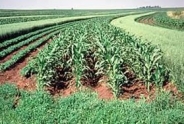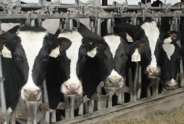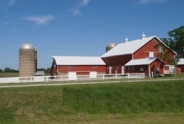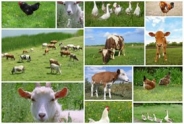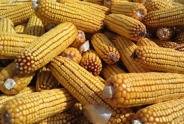New York On-Farm Research Partnership Value of Manure Project
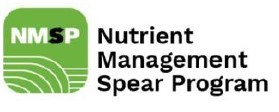
Research questions:
- How much nitrogen can be credited to manure?
- What is the yield impact of fall or spring manure applications in grain and silage corn?
Background:
Manure has all seventeen essential plant nutrients and can increase yield beyond what can be obtained
with fertilizer only. In this project, we evaluate the nitrogen fertilizer replacement value (how much N
can we credit to manure?) and yield differences as a result of manure application. This project is funded
by New York Farm Viability Institute (NYFVI) and the Northern New York Agricultural Development
Program (NNYADP). We are looking for farmer participants so let us know if you are interested in
implementing this trial on your farm. We can test any type of manure you are interested in evaluating
(liquid, separated, solids, compost, etc.) and any application method and timing. Contacts: Quirine
Ketterings (qmk2@cornell.edu), Kirsten Workman (kw566@cornell.edu), and Juan Carlos Ramos
(jr2343@cornell.edu).
Required for participation:
- Corn harvester (chopper or combine) with calibrated yield monitor system.
- Trial plot should get 20-30 lbs N/acre as starter only (no broadcast fertilizer N).
- Field size: length minimum of 1200 feet. Field width minimum of 12 times the harvester width. Trial area should be as homogenous as possible.
- Ideally 3rd or 4th year corn where N fertilizer is expected to be needed for optimal yield but otherwise with optimal fertility (pH, P, K, etc.).
- Sidedress unit that can apply up to 175 lbs N/acre in 35 lbs N increments (0-35-70-105-140-175) per the trial plot plan (below, Figure 2).
- Manure application equipment (surface application, incorporation, or injection) and your preferred manure type (liquid, separated liquids, solids, compost, digestate, etc.).
Experimental design:
The experimental design has three strips where manure is applied during fall 2022 or spring 2023, and
three where no manure is applied. Strips should be 2-3 harvester passes width so that at harvest, we
have at least one clean yield pass per plot. Each strip will have 6 sub-strips, each of them with a different
sidedress N rate. See below aerial image 1 (each sub-strip was 300 ft long and 120 feet wide) and the
plot plan with plot numbers (figure 2).
What you implement:
- Three strips of manure applied homogeneously across the strips (applied at fall or spring) and three strips without manure, per the plot plan (Figure 2).
- Flagged corners for each manure strip.
- Sidedress nitrogen per the plot plan (6 N rates per strip, Figure 2), ideally applied between V4-V6. Farm provides the variable rate prescription based on the 6 N rates.
- Yield data collected with a calibrated yield monitor system.
- All necessary inputs for regular crop production (weed control, etc.).
What you collect:
- One manure sample per strip taken at application (3 samples total; keep frozen until we pick it up; we can supply sampling cups).
- Yield data with a combine or chopper with calibrated yield monitor system.
- Field history information and crop management info (planting date, starter fertilizer use,
manure application rate and method and timing, any field crop passes for weed or pest control,
timing of sidedressing, past crop rotations, in addition to the yield data). - Manure systems information (type of storage, treatment, etc.).
What the Cornell team and collaborators will do (and share with you):
- Send the manure to be analyzed for nutrient content.
- Aid with treatment implementation and flagging (and GPS referencing) of strips and sub-strips.
- Collect soil samples for general soil fertility, ISNT-N (0-8 inches) and PSNT (0-12 inches) just before you sidedress the field.
- Collect NDVI imagery from satellite imagery (drone as well most likely).
- Collect CSNT samples and forage quality for corn silage fields for each plot.
- Share final reports with yield data, crop response to manure and fertilizer, all soil, manure, and silage quality information, and final reporting with you.
Please let us know if you will participate and where the trial location will be located!
Once we have a list of participants, we will start documenting locations and put together the plan for
completing the trials with you in 2023.
Thanks!
Quirine (607 339 7240), Kirsten (607 255 4890), and Juan Carlos (531 207 6339)
Upcoming Events
Memoir Reading: Barn Gothic
December 4, 2025
Bath, NY
Barn Gothic is an elegy for family farmers and an intimate portrait of three generations laboring to be fathers and sons while their livelihood falls apart. Beautifully told with a farmer's restraint and a poet's grace, it is a story of personal loss amid corporate corruption and of finding a way forward when everything you know disappears.
NY Small Farms Summit 2025: Stronger Together
December 5, 2025
Alfred, NY
We hope you will join us on December 5th for the 2025 New York Small Farms Summit! This is an opportunity to meet other farmers and ag supporters, learn about research and education projects, and set priorities for future efforts to grow small farm success.
At the Allegany County site, we will focus on giving trees a chance and how trees build resiliency on small farms. Whether attracted to fruit, nuts, vegetables, fodder or shade, trees can be an integral part of a successful farming system. Join us as we explore the opportunities for resiliency that come from adding tree crops or managing wooded areas of your farm for agroforestry or silvopasture systems.
Crops, Cows & Critters - Southwest New York Dairy, Livestock & Field Crops Newsletter Sponsorship
December 19, 2025
Our two forms of publications feature research-based and timely information from our four specialists, listed to the right, along with local event notifications and Cornell University outreach. This information is provided to participants who range from dairy, livestock, and field crops producers to agricultural suppliers and consultants.
Weekly Email Update: Shared with 625+ households who have signed up with our program.
Monthly Paper Mailer: To reach our stakeholders and farmers who lack internet access, we send out a monthly mailer where your company's logo and contact information would be featured with a mailing list of 330+ households.
If you sponsor our weekly and monthly publications you reach approximately 955 households.
Visit our website to view our newsletters!
Announcements
No announcements at this time.

